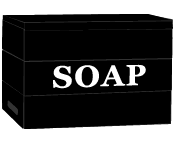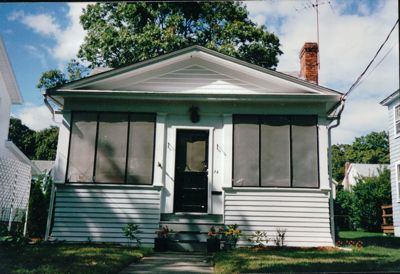An urban planner grows in Albany
 We're pulling out the AOA soap box each Sunday for people to praise, complain, suggest, joke, or make an observation about things they see going on in the Capital Region.
We're pulling out the AOA soap box each Sunday for people to praise, complain, suggest, joke, or make an observation about things they see going on in the Capital Region.
Nostalgia can encourage people to play fast and loose with their memories.
I'm sure I remember my childhood in Albany's Helderberg neighborhood as far more exciting and enjoyable than it really was. I was born in Boston, but I was three when we moved here, and I can say with certainty that I'm Albany-bred, of Albany stock, a true Albanian.
As a kid, your definition of "worst things ever" is pretty undeveloped, so it's certainly likely I wallowed in the misery of dating (lack of), homework, and boredom, but my brain doesn't store much of that stuff. The good memories of childhood (including sunny summer days playing football; late fall nights playing street hockey; making race car tracks in the yard for matchbox cars; riding bikes; and general mischief) are the memories that resonate.
I didn't realize until years later that the layout and landscape of the neighborhood I grew up in played a strong role in shaping my values -- and my career.
I'll admit, there were signs very early on that I might grow up to be an urban planner: I loved Sim City, my favorite book was New Providence, and I had a gigantic Lego city laid out in the basement.
Sometimes, you just don't see the forest through the trees.

I lived on Cardinal Avenue my entire childhood and it was paradise. My neighborhood was safe. We knew our neighbors. All the kids played together. There was a level of diversity I did not see in the suburban schools I attended. Everyone had a similarly sized house and lot - and all were unique.

Sure, we'd go to the mall for school shopping and electronics, but really - anything we needed was within a 10 minute walk. The plethora of neighborhood businesses and institutions left little to be desired and most were run by our neighbors. The places I remember best from childhood were true mom-and-pop stores. Even the "chains" in the business districts of New Scotland ave had a sense of harmony with the other businesses. I still go into the Fountain and take one whiff of the air and think (pardon the corniness but it's true) "This smells like childhood."
I never needed an adult to drive me anywhere. I never felt I was trapped.
As I grew older my world grew to distances I could ride my bike to. Riding past the comfort zone was scary, but rewarding for young explorers. I remember my first ride out to Dwayne's Toyland in Westgate Plaza - THE mecca for us kids. Late night rides around Albany's Municipal Golf Course were equally thrilling.

What I also remember about my neighborhood was the overwhelming sense of community. Growing up, I thought all neighborhoods were like this. It wasn't until I got much older, and saw the disconnected suburban sprawl, that I began to see connections between land-use and sense of place. Although, admittedly, as a kid I could never articulate the reasons I loved my neighborhood, and disliked the suburbs, the feelings were certainly there.
Still, when I was younger I pined to get out of Albany. I never realized how good I had it. It took years for those values instilled in me in those early days to bubble to the surface and lead to a sense of purpose.
My childhood inspired a strong love for sense of place. After working in television for a while, I kind of stumbled into an Urban Planning master's degree program, and then the proverbial pieces started to fit. I could finally articulate my love for my Utopian neighborhood and my unexplained aversion to sprawl.
I began to understand how today's land use and development decisions shape tomorrow's world.
I spent a lot of time in school thinking about what type of city I would design if I could from the ground up. A few of the more celebrated planners, new urbanists, are doing just that, building new "old" communities. This movement has given rise to a philosophical tug of war between developers, elected officials, planners, and new urbanists over whether or not traditional neighborhood design is preferable to the homogeneous lollipop cul-de-sacs that came into vogue in the latter 20th century.
Some people argue that new residential development should be dictated strictly by market forces, some argue that new residential development be in accordance with traditional neighborhood design and layout, and still others, myself included, would argue that while new development should be traditional in design, there's no need for "new urbanism" when the "old urbanism" isn't even close to capacity. I want to see the unique places in the city restored before resources are use elsewhere.
I believe that the traditional design of my neighborhood played a strong role in my love for cities because it inspired a strong sense of place in me. How could anyone care about a place they don't find unique, special, or interesting. I believe there is a strong correlation between great places and happy, interesting people.
I also believe cities, like Albany, can thrive once again if only they are given the chance. I am certain that by raising my kids in a neighborhood like the type I grew up in, I'll instill in them a strong love for their community.
Martin has a great -- and very appropriate -- username on Twitter: daleyplanit.
Last week on the Soap Box: Good neighbors check in to make sure you haven't frozen to death
Hi there. Comments have been closed for this item. Still have something to say? Contact us.
Comments
A good logical presentation of the need for us to restore and reuse before we go running off willy-nilly to tear up greenspace to do the new-for-the-sake-of-newness thing.
A a resident of a densely-developed near-urban neighborhood on the urban edge of a suburban community I see this dynamic at work in my town as well. Our neighborhood is actually pretty cohesive in a variety of ways, almost all of them good ones, and I think that my neighbors and I are largely on the same page about keeping it that way. Beyond the feel-good aspect of maintaining community identity, there is an economic reality involved, namely that it's generally a fair bit more cost-effective to reuse than to build new, especially in a venue where infrastructure is already in place.
... said Donald on Mar 6, 2011 at 3:26 PM | link
http://www.youtube.com/watch?v=Q1ZeXnmDZMQ
An older video of Kunstler who lives locally. Also shared this link via the facebook post.
... said sdinoto on Mar 6, 2011 at 4:21 PM | link